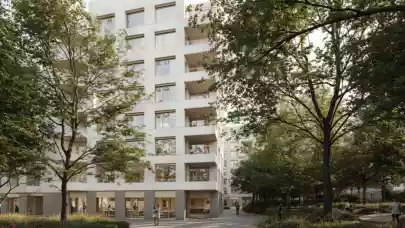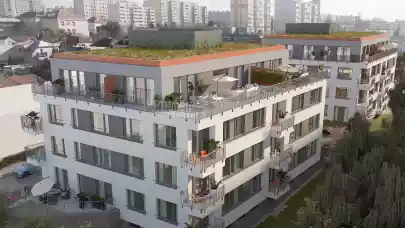
The trade sector, greatly weakened by the pandemic, has gained a new investment niche. This year, the increased activity of investors, now mainly focused on the construction of retail parks and convenience centres, will result in the largest growth of these facilities in the history of the Polish market.
“In the first half of this year, in retail parks alone, just over 100,000 sqm of Gross Leasable Area (GLA) was commissioned. There is even more area planned to be completed in the second half of the year. If the performance of the ongoing investments will be finalised on time, this year will end with a record-high result in terms of new supply in the retail park segment. It will be a breakthrough for the development of this format on the domestic market. The interest in such projects is enormous. Investors focus primarily on the smallest cities with less than 50.000 residents, where almost 70 percent of the supply is now under construction”, says Agata Karolina Lasota, Managing Director of LBC Invest.
In recent years, we have witnessed a two-way development of the retail sector. It was above all the number of large shopping centres, with extensive entertainment and gastronomic offer that was growing, while at the same time there were more and more facilities of small area, such as regional and local retail parks as well as everyday shopping centres. The last decade has seen a twofold increase in the supply in the area of retail parks.
In the past quarters, however, we could observe a total slowdown in investments in large-format shopping centres, and on the other hand, intensification of investors' activities related to the construction of smaller retail facilities. LBC Invest data shows that currently under construction there are retail parks that will provide almost 240,000 sqm of area, most of which is expected to be available on the market by the end of this year.
Retail parks are attractive to clients and new brands
This year, the retail sector may provide in total around 550,000. sqm of new area for sale, giving a result similar to the levels from 2019. As much as 40 percent of this area is retail parks.
The domestic stock of retail areas now equals approximately 12.3 million sqm, and less than 2.9 million sqm is concentrated in regional and traditional retail parks and convenience centres of this profile. - Half of the area the smaller retail formats are able to provide is located in regional retail parks. However, it is not the regional retail parks that currently have the greatest growth potential, but the local, smaller ones, which investors mostly build in small towns. Investments are located in places where the commercial offer is still underdeveloped. For new projects, the plots in locations that provide a great potential number of visitors from nearby boroughs are in the highest demand, Agata Karolina Lasota informs.
“The basic condition for the optimal profitability of this type of project is to ensure the presence of a popular food operator, such as Biedronka or Lidl, on the premises. What also increases the attractiveness of the parks is an outlet that belongs to a chain brand, offering products at lower prices, such as Dealz, Pepco, Action, KiK, which expansion plans are now, in many cases, more ambitious than before the pandemic. A good sign for the further development of retail parks is also the growing group of brands that so far have not been present in them but are now taking into consideration whether to place their stores in new facilities”, she notes.
Investor inflow
“There has already been a significant increase in developers' interest in the construction of retail park facilities since last year. 2020 brought over 200 thousand sqm of new Gross Leasable Area (GLA) in facilities of this format. The investors are motivated to invest in new projects and the reason why some of them have started to specialize only in this format is, among others, the visibly increased interest of the funds and capital groups in retail parks as investment assets. Capitalization rates in well-commercialized retail parks range from 7% to 9%. In large urban agglomerations, almost 7 percent. Nevertheless, there are also transactions with double-digit capitalization rates. For investors, the facilities offered in investment portfolios are the ones in the highest demand”, Agata Karolina Lasota admits.
The recent results on the investment market, at least in terms of the retail sector, are difficult to compare with the transaction volume recorded at it’s all-time high in 2018. It should be noted, however, that a very large number of transactions are underperformance. In 2020, over 20 transactions were concluded for retail parks and convenience real properties only, which accounted for almost 70 percent of all the acquisitions registered in the retail sector. The low level of investment value is therefore mainly related to the type of assets that the investors see now as the most popular once.
A favourable climate for further development of smaller formats
Retail parks have benefited heavily from the changes in shopping habits and patterns that took place due to the pandemic. Consumers resigned from visiting the large-format shopping centres and focused on more intimate, local and more secure retail facilities. Direct entry to stores, limited flow of customers and the time savings resulting from the possibility for quick purchases close to home have proved to be a great advantage of retail parks and convenience centres, which successfully meet the basic needs of local residents.
The more popular such facilities are among customers, the bigger the interest in their construction. The favourable forecasts for Poland for the coming years is the next thing that increases Investors' appetites. The analyses show that in comparison to Europe, our country will stand out in terms of retail sales growth. Investments in smaller retail buildings are also supported by the ongoing trend of locality in the market. Another advantage is the shorter process of building retail parks, which usually take no more than 18 months.
Agata Karolina Lasota underlines, however, that before starting such an investment, it is essential to describe a number of factors that determine the success of the future project - The large commercial potential of the location and an appropriate level of consumer flow with a certain purchasing power is not a sufficient factor to guarantee the success of the project. When looking for locations for new facilities, not only the commercial context and technical parameters of a given area but also other aspects should be analyzed. We offer assistance to the developers in the performance of the investment process, and institutional and individual investors, as well as legal entities, have the possibility to invest in retail parks at every stage of the investment. The legal and financial solutions which we propose are effective protection of their interests. On the other hand, the developers' strategy to sell and lease space in the facilities brings investors a satisfactory rate of return - adds the Managing Director of LBC Invest.
In the case of investment land, we are still dealing with a continuous upward trend in prices. Average prices of undeveloped land for retail parks in Poland are usually in the range of 150-500 PLN/sqm. Plots located on the outskirts and within the limits of the largest regional cities achieve higher prices, and within the limits of Warsaw, they even exceed 1,000 PLN/sqm.



